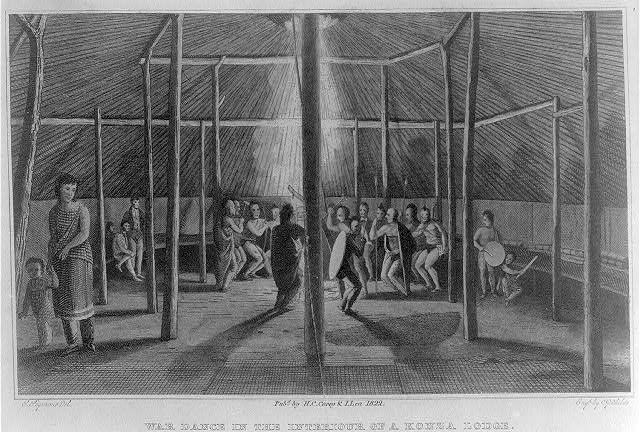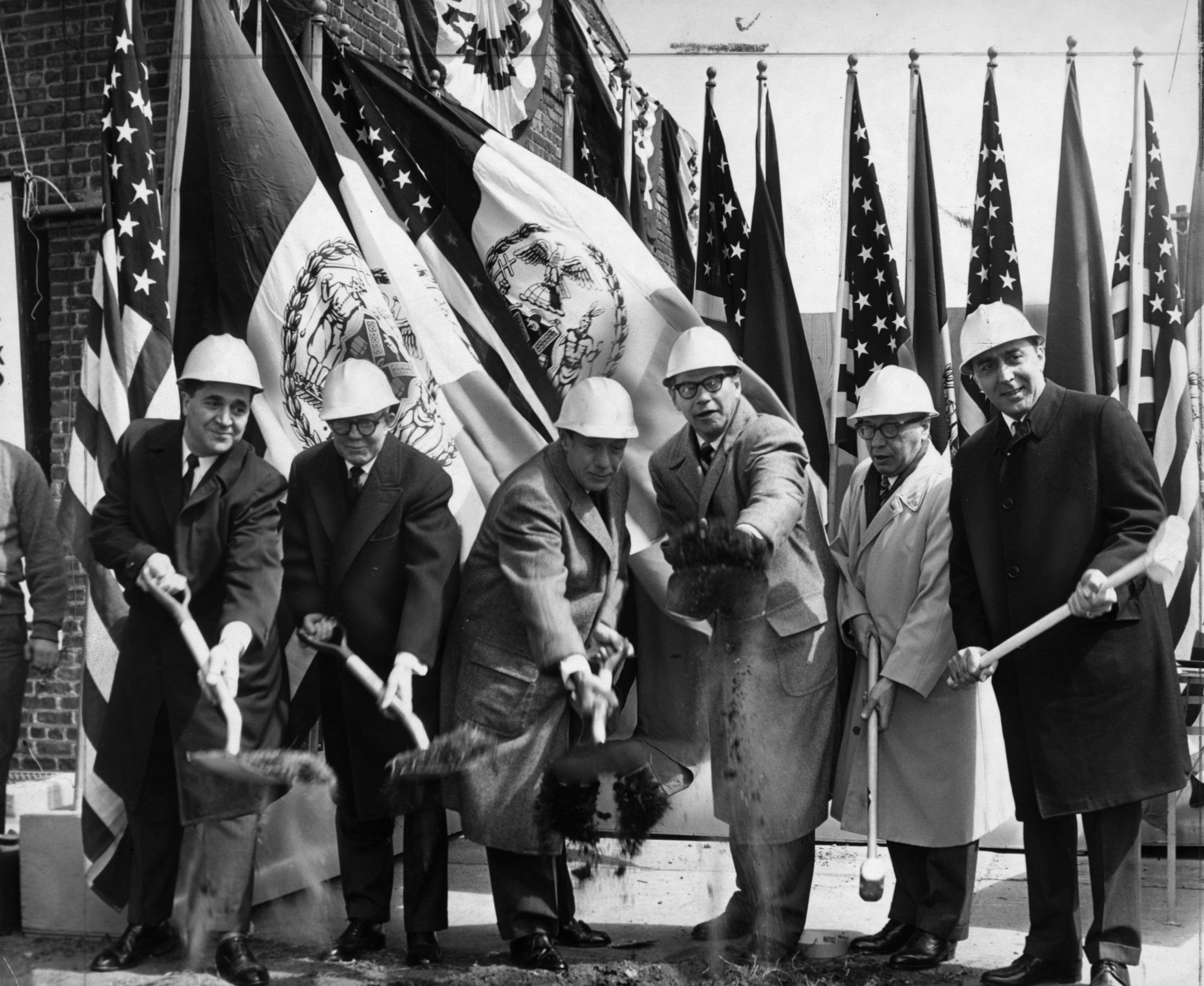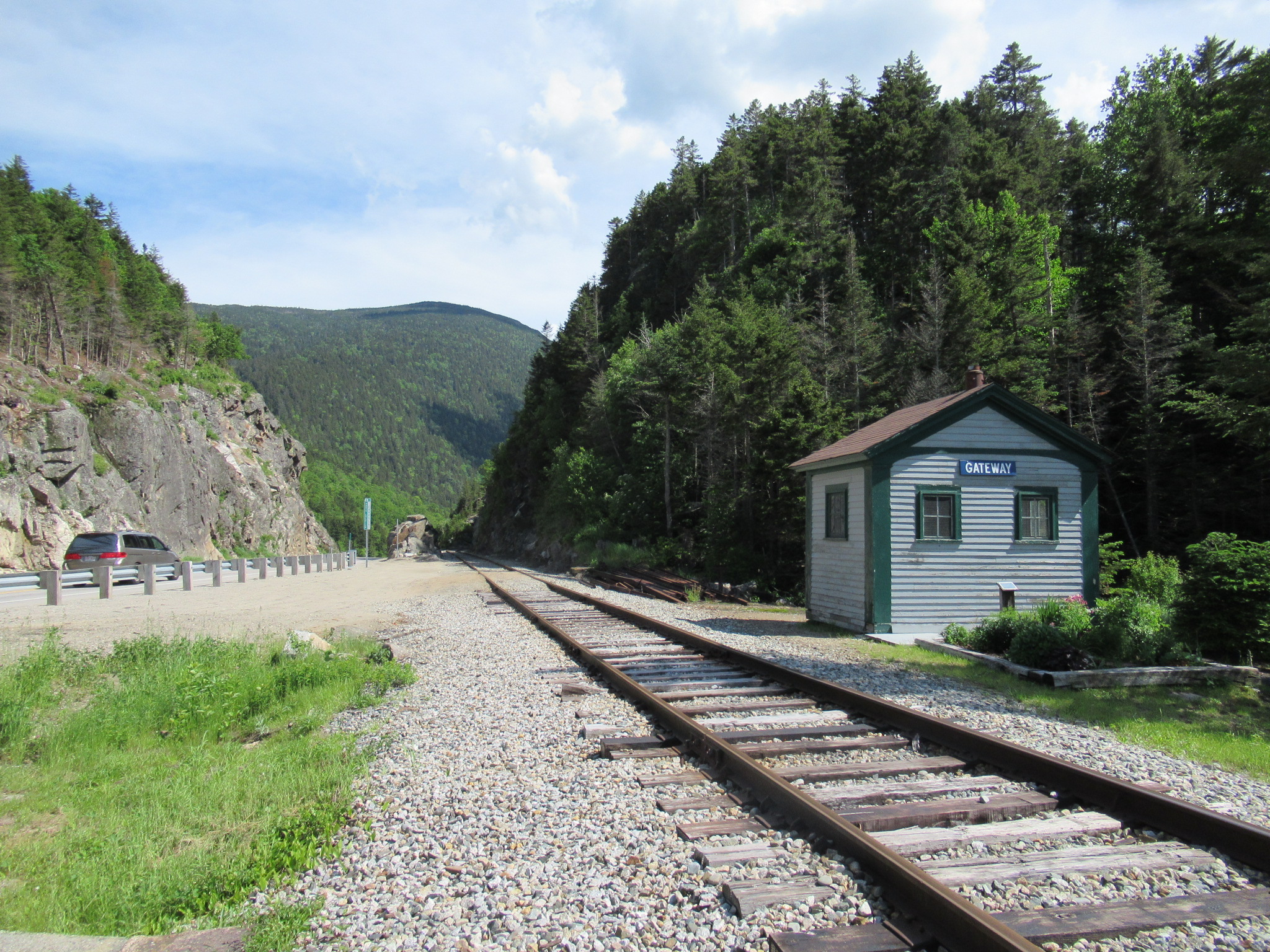|
1875 In Rail Transport
Events January events * January 1 – The Midland Railway of England abolishes the Second Class passenger category leaving First Class and Third Class. Other British railway companies follow Midland's lead during the rest of the year (Third Class is renamed Second Class in 1956). * January 7 – The North Pacific Coast Railroad begins narrow gauge railway service north from San Francisco Bay. February events * February 9 – The first train passes through the Hoosac Tunnel in Massachusetts. March events * March 24 – The Mayor of Los Angeles, California, approves a measure to allow the Spring and Sixth Street Railroad, a predecessor of the Pacific Electric Railway, to extend its line to connect to the Southern Pacific Railroad train station. April events * April 26 – Prince Edward Island Railway operates its first regularly scheduled train between Charlottetown and Georgetown. June events * June 1 – Bristol and Exeter Railway in England completes installation ... [...More Info...] [...Related Items...] OR: [Wikipedia] [Google] [Baidu] [Amazon] |
Midland Railway
The Midland Railway (MR) was a railway company in the United Kingdom from 1844 in rail transport, 1844. The Midland was one of the largest railway companies in Britain in the early 20th century, and the largest employer in Derby, where it had its headquarters. It amalgamated with several other railways to create the London, Midland and Scottish Railway at Railways Act 1921, grouping in 1923. The Midland had a large network of lines emanating from Derby, stretching to St Pancras railway station, London St Pancras, Manchester Central railway station, Manchester, Carlisle railway station, Carlisle, Birmingham Curzon Street railway station (1838–1966), Birmingham, and Bristol Temple Meads railway station, Bristol. It expanded as much through acquisitions as by building its own lines. It also operated ships from Heysham in Lancashire to Douglas, Isle of Man, Douglas and Belfast. A large amount of the Midland's infrastructure remains in use and visible, such as the Midland Main Lin ... [...More Info...] [...Related Items...] OR: [Wikipedia] [Google] [Baidu] [Amazon] |
Track Gauge
In rail transport, track gauge is the distance between the two rails of a railway track. All vehicles on a rail network must have Wheelset (rail transport), wheelsets that are compatible with the track gauge. Since many different track gauges exist worldwide, gauge differences often present a barrier to wider operation on railway networks. The term derives from the metal bar, or gauge, that is used to ensure the distance between the rails is correct. Railways also deploy two other gauges to ensure compliance with a required standard. A ''loading gauge'' is a two-dimensional profile that encompasses a cross-section of the track, a rail vehicle and a maximum-sized load: all rail vehicles and their loads must be contained in the corresponding envelope. A ''structure gauge'' specifies the outline into which structures (bridges, platforms, lineside equipment etc.) must not encroach. Uses of the term The most common use of the term "track gauge" refers to the transverse distance be ... [...More Info...] [...Related Items...] OR: [Wikipedia] [Google] [Baidu] [Amazon] |
Kansas
Kansas ( ) is a landlocked U.S. state, state in the Midwestern United States, Midwestern region of the United States. It borders Nebraska to the north; Missouri to the east; Oklahoma to the south; and Colorado to the west. Kansas is named after the Kansas River, in turn named after the Kaw people, Kansa people. Its List of capitals in the United States, capital is Topeka, Kansas, Topeka, and its List of cities in Kansas, most populous city is Wichita, Kansas, Wichita; however, the largest urban area is the bi-state Kansas City metropolitan area split between Kansas and Missouri. For thousands of years, what is now Kansas was home to numerous and diverse Plains Indians, Indigenous tribes. The first settlement of non-indigenous people in Kansas occurred in 1827 at Fort Leavenworth. The pace of settlement accelerated in the 1850s, in the midst of political wars over the Slavery in the United States, slavery debate. When it was officially opened to settlement by the U.S. governm ... [...More Info...] [...Related Items...] OR: [Wikipedia] [Google] [Baidu] [Amazon] |
Renfrew, Ontario
Renfrew is a town on the Bonnechere River in Renfrew County, Ontario, Canada. Located one hour west of Ottawa in Eastern Ontario, Renfrew is the fourth largest town in the county after Petawawa, Pembroke and Arnprior. The town is a small transportation hub connecting Highway 60 and Highway 132 with the Trans-Canada Highway. Renfrew is also known historically for its role in the formation of the National Hockey League. It lies about 5 kilometres from the Quebec border, about 10 kilometres by road. Renfrew makes most of Canada’s hockey tape. History Named after Renfrewshire, Scotland, in approximately 1848, Renfrew was settled largely in part due to logging in the area in the early 19th century, where the river was used in order to drive the lumber to locations such as Ottawa. This heritage was until recently celebrated every July with the Lumber Baron Festival. Geography Renfrew and the surrounding Township of Horton are at the intersection of the Bonnechere River and t ... [...More Info...] [...Related Items...] OR: [Wikipedia] [Google] [Baidu] [Amazon] |
Canada Central Railway
The Brockville and Ottawa Railway (B&O) was an early railway incorporated in 1853 by the Legislative Assembly of the Province of Canada with the financial support of English iron-founders, Bolckow and Vaughan, of Middlesbrough, England, who were supplying the iron for the railway. It ran north from the town of Brockville on the Saint Lawrence River to Smiths Falls, Perth, Carleton Place, and Almonte. It was built primarily to serve the timber trade on the Ottawa Valley, short-cutting routes that led into the city of Ottawa, further downstream. The first railway tunnel in Canada, the Brockville Tunnel, was dug in order to allow the B&O to reach the port lands on the south side of the city, which sits on a bluff. In September 1865 the B&O opened for travel to Sand Point near Arnprior on the Ottawa River. A second railway company, the Canada Central Railway (CCR), was first chartered in May 1861. The Act authorized the company to build from a point on Lake Huron to a point on the ... [...More Info...] [...Related Items...] OR: [Wikipedia] [Google] [Baidu] [Amazon] |
Pembroke, Ontario
Pembroke ( ) is a city in the Canadian province of Ontario at the confluence of the Muskrat River (Ontario), Muskrat River and the Ottawa River in the Ottawa Valley, northwest of Ottawa. Though containing the administrative headquarters of Renfrew County, it is an independent city. History The first European settler to the area now known as Pembroke was Daniel Fraser in 1823, who squatted on land that was discovered to have been granted to a man named Abel Ward. Ward later sold the land (where Moncion's Metro Supermarket is located) to Fraser, and nearby Fraser Street is named after the family. Peter White (Canadian politician), Peter White, a veteran of the Royal Navy arrived in 1828, squatting beside Fraser on the land where Dairy Queen is now located. Other settlers followed, attracted by the growing Lumber industry on the Ottawa River, lumbering operations of the area. Originally named Miramichi, The hamlet was later renamed Moffat, and then Sydenham. In 1856, it merged with ... [...More Info...] [...Related Items...] OR: [Wikipedia] [Google] [Baidu] [Amazon] |
Groundbreaking
Groundbreaking, also known as cutting, sod-cutting, turning the first sod, turf-cutting, or a sod-turning ceremony, is a traditional ceremony in many cultures that celebrates the first day of construction for a building or other project. Such ceremonies are often attended by dignitaries such as politicians and businesspeople. The shovel used during the groundbreaking is often a special ceremonial shovel, sometimes colored gold, meant to be saved for subsequent display and may be engraved. In other groundbreaking ceremonies, a bulldozer is used instead of a shovel to mark the first day of construction. In some groundbreaking ceremonies, the shovel and the bulldozer mark the first day of construction. In other places, this ceremony can be replaced by a "laying of the first stone" event. Meaning When used as an adjective, the term ''groundbreaking'' may mean being or making something that has never been done, seen, or made before, "stylistically innovative works". History Groun ... [...More Info...] [...Related Items...] OR: [Wikipedia] [Google] [Baidu] [Amazon] |
Mountain Division
The Mountain Division (later the Mountain Subdivision) is a railroad line that was once owned and operated by the Maine Central Railroad (MEC). It stretches from Portland, Maine on the Atlantic Ocean, through the Western Maine Mountains and White Mountains of New Hampshire, ending at St. Johnsbury, Vermont in the Northeast Kingdom. The line was abandoned in 1983 by MEC's successor, Guilford Transportation Industries (GTI). Guilford retained a stub between Portland and Westbrook. A section in New Hampshire remains in use by heritage railway Conway Scenic Railroad. History Built as the Portland & Ogdensburg Railroad before acquisition by the Maine Central Railroad (MEC), the line initially provided transportation for summer visitors to grand Victorian hotels, including the Bay of Naples Inn in Naples (reached by connection with Sebago Lake steamboats), the Crawford House in Crawford Notch and the Mount Washington Hotel in Bretton Woods. Cool, clean air at Sebago Lake and ... [...More Info...] [...Related Items...] OR: [Wikipedia] [Google] [Baidu] [Amazon] |
Maine Central Railroad
The Maine Central Railroad was a United States, U. S. class 1 railroad in central and southern Maine. It was chartered in 1856 and began operations in 1862. By 1884, Maine Central was the longest railroad in New England. Maine Central had expanded to when the United States Railroad Administration assumed control in 1917. The Maine Central Railroad main line, main line extended from South Portland, Maine, east to the Canada–United States border with New Brunswick, and a Mountain Division extended west from Portland, Maine, Portland to St. Johnsbury, Vermont, and north into Quebec. The main line was double track from South Portland to Royal Junction, where it split into a "lower road" through Brunswick, Maine, Brunswick and Augusta, Maine, Augusta and a "back road" through Lewiston, Maine, Lewiston, which converged at Waterville, Maine, Waterville into single track to Bangor, Maine, Bangor and points east. Branch lines served the industrial center of Rumford, Maine, Rumford, a re ... [...More Info...] [...Related Items...] OR: [Wikipedia] [Google] [Baidu] [Amazon] |
White Mountains (New Hampshire)
The White Mountains are a mountain range covering about a quarter of the state of New Hampshire and a small portion of western Maine in the United States. They are a subrange of the northern Appalachian Mountains and the most rugged mountains in New England. Several of the higher peaks contain an Alpine tundra. The range is heavily visited due to its proximity to Boston, New York City, and Montreal. Most of the area is public land, including the White Mountain National Forest and a number of state parks. Its most famous mountain is Mount Washington, which is the highest peak in the Northeastern U.S. and for 76 years held the record for fastest surface wind gust in the world ( in 1934). Mount Washington is part of a line of summits, the Presidential Range, that are named after U.S. presidents and other prominent Americans. The White Mountains also include the Franconia Range, Sandwich Range, Carter-Moriah Range and Kinsman Range in New Hampshire, and the Mahoosuc Range str ... [...More Info...] [...Related Items...] OR: [Wikipedia] [Google] [Baidu] [Amazon] |
Portland And Ogdensburg Railroad
The Portland & Ogdensburg Railroad was a railroad planned to connect Portland, Maine, Portland, Maine to Ogdensburg, New York. The plan failed, and in 1880 the Vermont section was reorganized and leased by the Boston and Lowell Railroad, Boston & Lowell Railroad. In 1886, the Maine and New Hampshire section was reorganized as the Portland & Ogdensburg Railway. That part was leased to the Maine Central Railroad in 1888, and in 1912 the Maine Central leased the eastern part of the Vermont section from the Boston & Maine Railroad, the successor to the B&L. History With the growth of the American Midwest and Upper Canada, transportation between those areas and the outside world became an issue. The natural connector was the Great Lakes and St Lawrence River, but the river had rapids in some areas and froze in the winter. Alternative transportation to an ice-free port by rail was possible, and Boston increased in importance as a result, but Boston's monopoly position proved bothers ... [...More Info...] [...Related Items...] OR: [Wikipedia] [Google] [Baidu] [Amazon] |
Boston, Revere Beach And Lynn Railroad
The Boston, Revere Beach and Lynn Railroad was a narrow-gauge passenger-carrying shortline railroad between East Boston and Lynn, Massachusetts, from 1875 to 1940. Part of the railroad's right of way now forms the outer section of the Massachusetts Bay Transportation Authority's Blue Line rapid transit service. History The railroad was chartered May 23, 1874, and opened July 29, 1875. A ferry connection from its southern terminus at East Boston connected to Rowes Wharf in the city of Boston proper, with a connection to the Atlantic Avenue Elevated (from 1901 to 1938). The railroad followed the coastline north-eastward through the resort of Revere Beach to the far terminus at Lynn. A branch split at Orient Heights to a loop through Winthrop. The rail laid was light, 30-pound per yard (15 kg/m) rail being installed at first, increased to 50 lb/yd (25 kg/m) in 1885 and 60 lb/yd (30 kg/m) in 1904. It was, however, laid from the beginning on standard ... [...More Info...] [...Related Items...] OR: [Wikipedia] [Google] [Baidu] [Amazon] |







